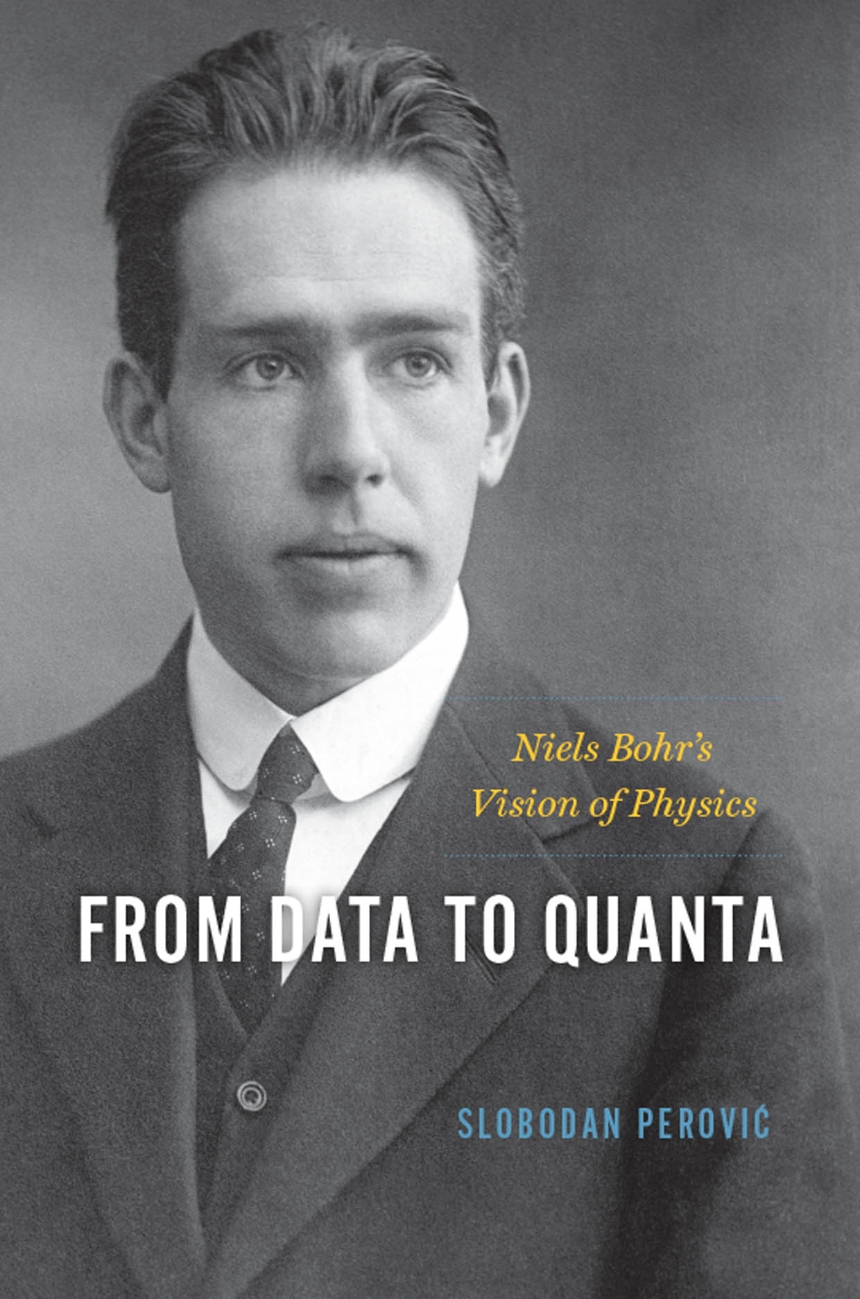From Data to Quanta
Niels Bohr’s Vision of Physics
The first comprehensive philosophical and historical account of the experimental foundations of Niels Bohr’s practice of physics.
Niels Bohr was a central figure in quantum physics, well known for his work on atomic structure and his contributions to the Copenhagen interpretation of quantum mechanics. In this book, philosopher of science Slobodan Perović explores the way Bohr practiced and understood physics, and analyzes its implications for our understanding of modern science. Perović develops a novel approach to Bohr’s understanding of physics and his method of inquiry, presenting an exploratory symbiosis of historical and philosophical analysis that uncovers the key aspects of Bohr’s philosophical vision of physics within a given historical context.
To better understand the methods that produced Bohr’s breakthrough results in quantum phenomena, Perović clarifies the nature of Bohr’s engagement with the experimental side of physics and lays out the basic distinctions and concepts that characterize his approach. Rich and insightful, Perović’s take on the early history of quantum mechanics and its methodological ramifications sheds vital new light on one of the key figures of modern physics.
Niels Bohr was a central figure in quantum physics, well known for his work on atomic structure and his contributions to the Copenhagen interpretation of quantum mechanics. In this book, philosopher of science Slobodan Perović explores the way Bohr practiced and understood physics, and analyzes its implications for our understanding of modern science. Perović develops a novel approach to Bohr’s understanding of physics and his method of inquiry, presenting an exploratory symbiosis of historical and philosophical analysis that uncovers the key aspects of Bohr’s philosophical vision of physics within a given historical context.
To better understand the methods that produced Bohr’s breakthrough results in quantum phenomena, Perović clarifies the nature of Bohr’s engagement with the experimental side of physics and lays out the basic distinctions and concepts that characterize his approach. Rich and insightful, Perović’s take on the early history of quantum mechanics and its methodological ramifications sheds vital new light on one of the key figures of modern physics.
240 pages | 8 halftones, 1 line drawing | 6 x 9 | © 2021
Physical Sciences: History and Philosophy of Physical Sciences
Reviews
Table of Contents
Introduction
Part 1: Preliminaries
2 From Laboratory to Theory
3 From Classical Experiments to Quantum Theory
Part 2: Bohr’s Vision in Practice: the Old Quantum Theory
4 Spectral Lines, Quantum States, and a Master Model of the Atom
5 The Correspondence Principle as an Intermediary Hypothesis
6 Reception
7 The Scientific Moderator
Part 3: Toward Quantum Mechanics
8 Quantum Corpuscles, Quantum Waves, and the Experiments
9 The Uncertainty Principle as an Intermediary Hypothesis
10 Metaphysical Principles and Heuristic Rules
11 New Formalisms and Bohr’s Atom
12 Complementarity Established and Applied
Part 4: Aftermath
13 Bohr and the “Copenhagen Orthodoxy”
14 Bohr’s Response to the Einstein-Podolsky-Rosen Argument
15 The Mature Bohr and the Rise of Slick Theory and Theoreticians
Acknowledgments
Bibliography
Index
Part 1: Preliminaries
2 From Laboratory to Theory
3 From Classical Experiments to Quantum Theory
Part 2: Bohr’s Vision in Practice: the Old Quantum Theory
4 Spectral Lines, Quantum States, and a Master Model of the Atom
5 The Correspondence Principle as an Intermediary Hypothesis
6 Reception
7 The Scientific Moderator
Part 3: Toward Quantum Mechanics
8 Quantum Corpuscles, Quantum Waves, and the Experiments
9 The Uncertainty Principle as an Intermediary Hypothesis
10 Metaphysical Principles and Heuristic Rules
11 New Formalisms and Bohr’s Atom
12 Complementarity Established and Applied
Part 4: Aftermath
13 Bohr and the “Copenhagen Orthodoxy”
14 Bohr’s Response to the Einstein-Podolsky-Rosen Argument
15 The Mature Bohr and the Rise of Slick Theory and Theoreticians
Acknowledgments
Bibliography
Index
